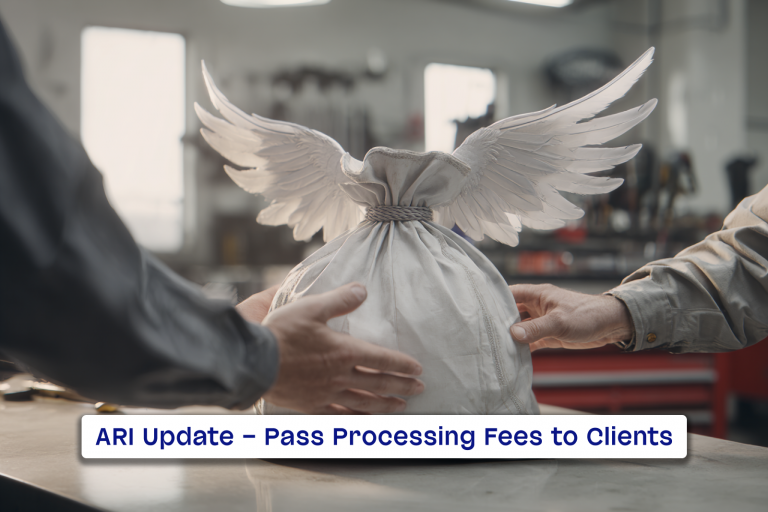A guide to auto repair labor time pricing and good industry practices.
Offering a reasonable rate for your auto repair services can be a lot trickier than people think. Mechanics, technicians, and shop owners need to consider multiple things as they determine the final cost of their services. Customers, on the other hand, tend to focus primarily on prices and oftentimes feel confused or worried once it’s time to pay for their car fix. But why exactly is that the case?
Determining prices.
When it comes to car repair prices, people most commonly think of hourly rates. Hourly rates are oftentimes based on repair labor times, which are a standardized estimate of how much time mechanics require to perform a task. For this purpose, a qualified technician with access to all necessary tools is timed while completing an auto repair job.
The process is also labeled as the “factory time standard” and is usually determined by a vehicle manufacturer. Such labor times are useful to many large-scale repair shops and dealerships that have enough experienced mechanics.

In some cases, smaller-scale car maintenance businesses need to rely on different tools when deciding how to price their services. One of them is a labor guide. Popular guides include MOTOR Auto Mechanic Labor Guide, Real-Time Labor Guide, and Chilton Motor Guide.
The following books provide relevant information about estimated repair times of many tasks. Mechanics generally prefer labor guides that provide longer work times, because they commonly get paid on an hourly basis.
Other factors such as business scale, location, contracts, partnerships, etc. also, play a big role when auto industry workers establish their repair rates.
Industry-specific technology
Aside from the factory time standard, labor guides and flat-rate manuals modern auto repair software can help tremendously with price makeup. Such software has functionalities that can generate estimated prices, determine task difficulty, count local taxes, and even calculate “environmental fees”.

Another benefit of those apps is the interface itself. It allows for more productivity by giving you time tracking options, easier access to ongoing tasks and important vehicle details.
ARI provides these and many other helpful features. Check them out here!
Exceptions in price makeup
Contrary to what people believe, if you ask a friend mechanic to do a repair job for you outside their working hours, it may cost you more or even double than what you usually pay. This happens because of the added responsibility for their efforts outside a standard work setting. Add to that the possible lack of specialized equipment or additional transportation costs and the argument for a higher price starts to seem obvious.
Similarly, conditions such as rust, moisture, or cold can add a significant amount of time to a repair job. Thereby bringing the repair time and consequently the service price up.
The same thing happens when an old vehicle arrives in a repair shop – the maintenance work can be more difficult and the labor time – much higher.
Don’t lose track of your labor times with ARI!

As it’s the case with almost everything – you are much more likely to pay more when something unexpected happens.
Why customers might feel frustrated?
As mentioned previously – customers rarely have time to think about all those price makeup factors.
Whenever clients have to pay a large fee, explanations such as “This is how things are” or “That is the standard The procedure” will rarely if ever alleviate their frustration.
From your perspective and even objectively your pricing can indeed be fair. But if you make little effort to communicate that – the customer experience won’t be as satisfying.
How to approach the issue
Sometimes explaining things plain and simple is the way to go. But if your clients are unwilling to accept your perspective – here are some extra things you can do to make them happy:
- Provide price estimates
This can be difficult in some cases, but it’s a great idea to bring a reference point whenever possible.
- Give price comparisons
When your prices are better than the competition, it’s only natural to showcase that. That’s one good way of making your customers happy.
- More transparency
Building prestige and customer loyalty is a difficult thing to do. But doing that the right way means you won’t lose customers even if make some unintentional mistakes.
- Be extra informative
Sometimes only a mechanic knows how to inform clients about certain features of their vehicle. Doing that charitably can be a way of earning their trust.
- Send reminders
Whenever some repair service is due, do your best to inform your clients about it. People appreciate the extra effort.
ARI can also help you with service reminders!
Ultimately, it’s always a plus to give your customers relevant information about pricing, services, and their vehicle in general.
Make sure to share the article if you liked the info and tips here. And leave a comment to give us feedback or remind us about something we missed.








